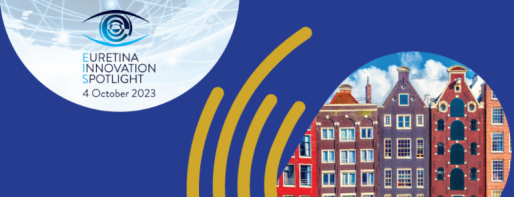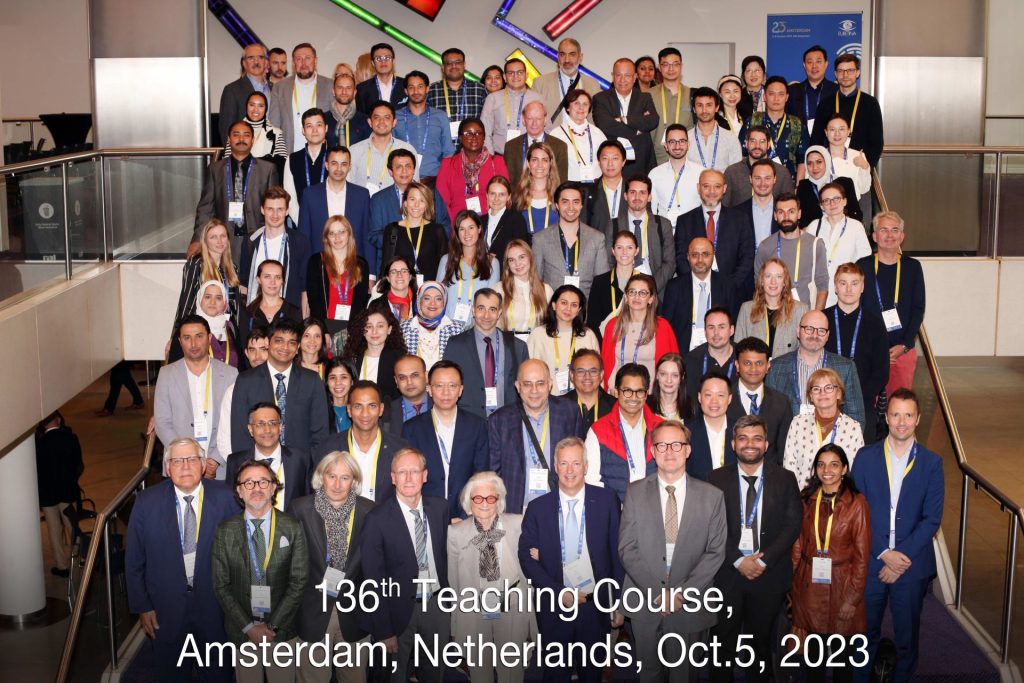Mix of formats engage attendees and enhance learning in the 136th Retinal Detachment Teaching Course
EURETINA delegates who attended the Retinal Detachment Teaching Course represent participants in the 136th iteration of this programme that was first organised by Professor Ingrid Kreissig in 1991. The course at the EURETINA Congress is just one of several that is now offered each year in countries throughout the world and that provides attendees with a highly valuable and enjoyable learning experience.
Welcoming the registrants, Prof Kreissig noted how happy she was to see such a large group and expressed her hope that the contents of the course would meet the expectations of those attending.
She added, “We will have lots of time for discussion, and discussion is the most important thing, because we learn from you, and hopefully you can learn from us.”
As has been the case for the past seven years, the focus of the 136th Teaching course was on Minimal Surgery without Drainage for Retinal Detachment. While the methods of this approach have been refined over the decades by the introduction of several changes, course attendees were educated not only in the latest techniques but also about the underlying research leading up to their implementation. For example, attendees learned the rationale for why the sponge replaced the original polyviol plombe and evidence supporting the switch from necrotising diathermy to cryosurgery.
Essential rules for how to find the break in a primary detachment as defined by Lincoff and for reoperation established by Lincoff and Kreissig were also covered as a foundation for achieving reattachment after minimal surgery that is limited to the area of the break and done without drainage. In addition, Dr Kreissig presented her findings from 15 years of follow-up of a series of 107 consecutive retinal detachments that she said should rule out doubts about whether a retina reattached using the minimal surgery technique will remain attached long-term and if visual acuity regained after the surgery is maintained.
Interactive case-based learning
The course began with presentations on preoperative diagnostics and differential diagnosis with a significant amount of time devoted to those important topics. As a new feature, the 136th Teaching Course included a video session in which seven experts representing five countries presented short videos showcasing their personal approach to minimal segmental buckling without drainage for retinal detachment. These presentations also sparked lively and critical discussions by expert faculty.
As promised by Prof Kreissig, there was ample time devoted to discussion following each presentation, and the attendees had the opportunity to learn from those exchanges in addition to the information contained in the well organised didactic presentations. The discussion periods both allowed the faculty to share their personal ideas and query presenters and gave participants the opportunity to ask questions.
As another high point, the course closed with a session in which speakers presented the background history for selected cases of retinal detachment chosen from their own files and then asked the course participants to suggest and discuss possible options for repair. After the discussion of every case, presenters shared how they approached the surgery and reported the patient’s outcomes.


